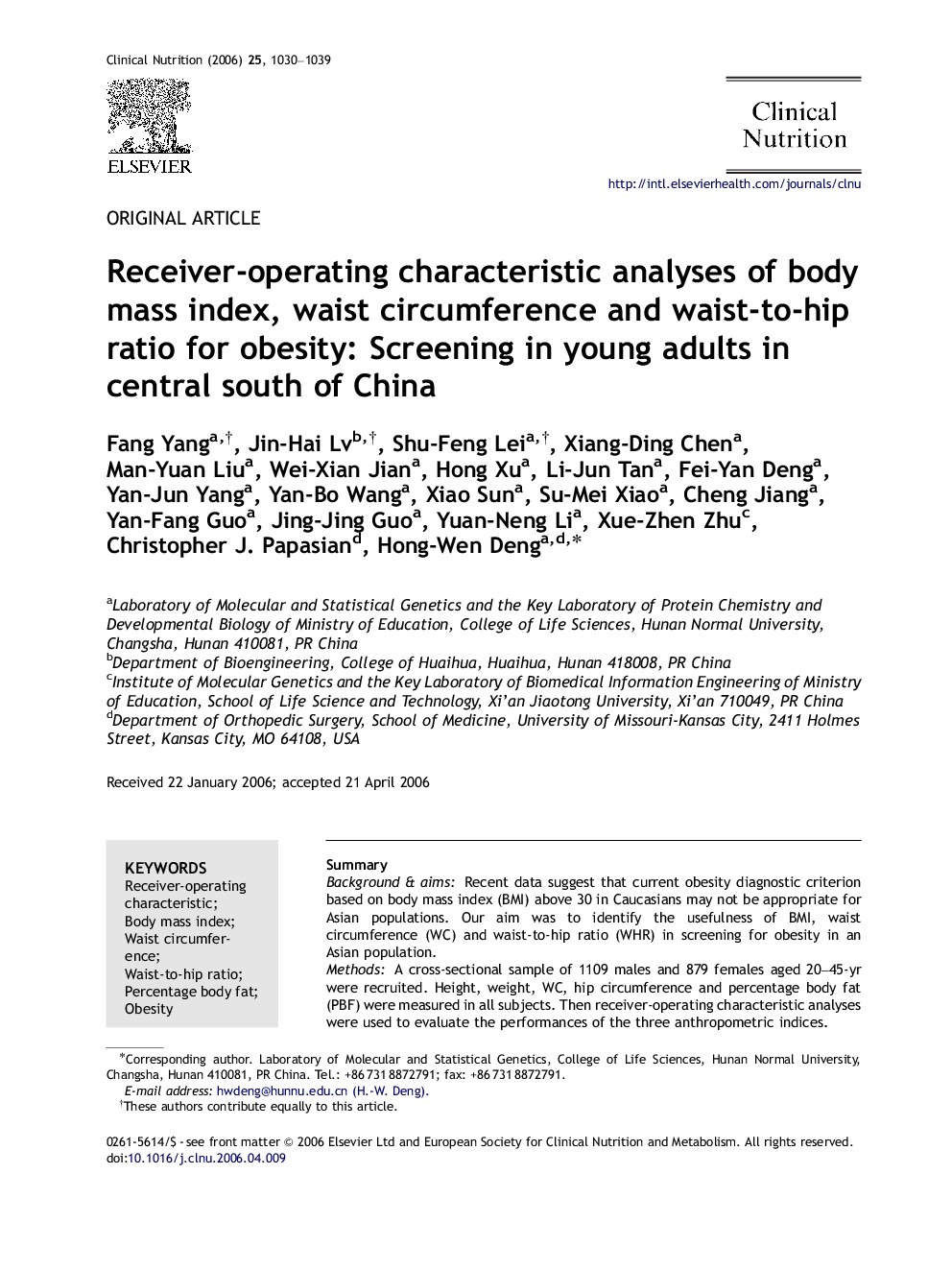| Article ID | Journal | Published Year | Pages | File Type |
|---|---|---|---|---|
| 2688683 | Clinical Nutrition | 2006 | 10 Pages |
SummaryBackground & aimsRecent data suggest that current obesity diagnostic criterion based on body mass index (BMI) above 30 in Caucasians may not be appropriate for Asian populations. Our aim was to identify the usefulness of BMI, waist circumference (WC) and waist-to-hip ratio (WHR) in screening for obesity in an Asian population.MethodsA cross-sectional sample of 1109 males and 879 females aged 20–45-yr were recruited. Height, weight, WC, hip circumference and percentage body fat (PBF) were measured in all subjects. Then receiver-operating characteristic analyses were used to evaluate the performances of the three anthropometric indices.ResultsBMI, WC and WHR showed strong positive correlation with PBF (r=0.47–0.75r=0.47–0.75) in both males and females within both age groups. True-positive rates ranged from 82.4% to 94.1% and 68.8% to 86.3% in males and females, respectively. True-negative rates ranged from 64.1% to 84.7% and from 56.9% to 79.0%, respectively. The areas under the curves (AUCs) for WC and BMI were high (0.76–0.92) in both sexes and divided age groups (20–30-yr and 31–45-yr), and those for WHR were a little lower (0.74–0.88).ConclusionsBMI and WC are two important predictors for obesity in Chinese, and WHR is an alternative.
